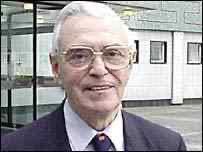Programme Notes Part 12
- debscoady
- Aug 10, 2022
- 3 min read

As the 1970’s dawned, so did a time of great success at the club. Since 1948 when the first magazine style football programme was introduced, Chelsea had been without a doubt the great innovators. In the capable hands of Albert Sewell the match day programme was a must have for anyone attending a game at Stamford Bridge and the continuous improvements to its design made it a best seller.
The size of the programme, that had hardly changed since the early 1960’s, was probably one of the reasons behind its popularity as it was easier to slip into a pocket. There were only minor variations to the front cover, but all the usual suspects were inside, especially the ‘off the post’ section and the highly informative results and statistics pages.
That first season of the new decade saw the capture of the F.A.Cup and it was featured heavily in the first issue of the 1970-71 campaign when Chelsea played Everton for the F.A. Charity Shield at Stamford Bridge. The issue contained both black & white and colour photographs of the two epic games against Leeds United (Dirty).

The first League programme also included photographs from the final as well as the new style handbook, first introduced in 1965-66.

At the end of that season a new milestone was reached at Chelsea when they produced their own souvenir programme for the European Cup Winners Cup Final against Real Madrid. After a replay Chelsea were again victorious and the fact was celebrated in the programme for the game against Manchester United on 18th August 1971.
At the end of that season the original East Stand, built by Archibald Leitch, was demolished as the club began what was intended to be a complete re-build of Stamford Bridge. The three sided ground hosted Leeds United (Dirty) for the opening game of the 1972-73 season and 51,102 crammed in to see Chelsea win 4-0. Thousands more were locked out and from then on a safety limit of 38,000 was imposed on the ground.
By recent standards it was a poor campaign, but the same couldn’t be said of the Chelsea programme. In total, 780,934 spectators came through the Stamford Bridge turnstiles for the twenty six home games and between them they bought 770,932 programmes, representing an average sales percentage of 99%, still believed to be a world record for any club.
The 1973-74 campaign saw the club riven by player unrest and the realisation that an era was coming to an end, but the programme sales were still as high as ever even though attendances were beginning to fall. The Stoke City programme of 27th April included a photograph of the still unfinished new East Stand. It would eventually be ready by August of that year but a year late and well over budget.
That season also saw the last of the mini-format programmes under Albert Sewell’s stewardship. The 1974-75 season marked a return to a larger sized programme, rather akin to the old Chelsea Chronicle and it was just as popular. A new feature in that programme was an A-Z of previous players and in those pre internet days it turned out to be a valuable source of information for all those budding anoraks.
Relegation was always on the cards during that troubled season but apart from the tweak to the front cover the programme largely remained the same during the Division 2 campaign of 1975-76. The following season proved to be one of the most memorable in Chelsea’s history and Albert provided supporters with one of the most identifiable programme covers, one that is much loved by Chelsea fans including me.
The format remained virtually the same for the first season back in Division 1, but in 1978 Albert Sewell, the inspiration behind many of us anoraks with matching cardigans, retired from editing the Chelsea programme. He had kept us entertained and enthralled for over thirty years and we owe him a great debt of gratitude. It must also be said that his work was recognised due to the awards that the programme received during his tenure as Editor.
That is why I am calling a halt to the story of the Chelsea programme out of respect for Albert Sewell.

In subsequent years the programme was always a decent read and I still have a subscription. Sadly, I hardly read them now as they remind me of a cross between a propaganda rag and a clothing catalogue. In my quieter moments I still pull out the binders that contain programmes from the 1940’s, right through to the 70’s and marvel at the information that they contain.
I hope you have enjoyed reading this thirteen part series as much as I have writing it.
By Paul Waterhouse, Bygone Chelsea 1905-99










































Комментарии